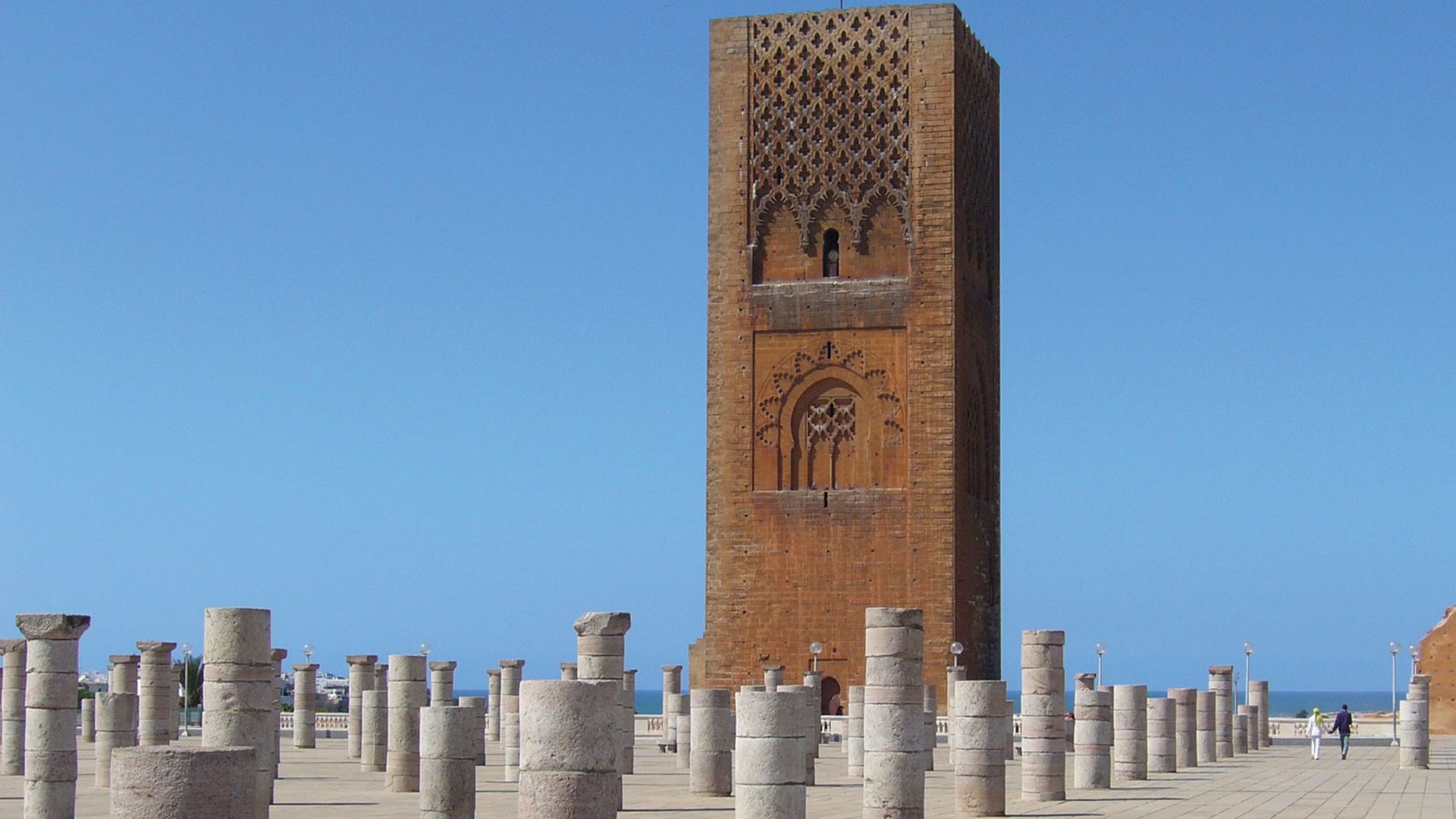Description
Property Name: Al-Hassan Mosque
Inventory No: 212-3-1
Date of infill of the inventory form: 2008-02-29
Country (State party): Morocco
Province: Rabat
Town:
Geographic coordinates: 34° 1′ 24.09″ N
6° 49′ 20.47″ W
Historic Period:
Year of Construction: end of 12th century
Style: Almohad
Original Use: Mosque
Current Use: Mosque
Architect: Unknown
Significance
Yaqub al-Mansur founded Rabat in 1191 and at the same time began work on this enormous Friday mosque, which was left unfinished at 1199. If completed, it would have been one of the largest religious monuments in the Islamic world. The aisles of the sanctuary are multiplied to form a triple transept along the qibla wall, and two internal courtyards appear in addition to the more usual long courtyard near the entrance. The columns were composed of cylindirical stone drums. The minaret is partly preserved and probably would have been about 60 m high. The minaret bears similar decorative features to that of other Almohad mosques in Marrakesh.
Selection Criteria
iv. to be an outstanding example of a type of building, architectural or technological ensemble or landscape which illustrates (a) significant stage(s) in human history
vi. to be directly or tangibly associated with events or living traditions, with ideas, or with beliefs, with artistic and literary works of outstanding universal significance
State of Preservation
The mosque is an unfinished edifice.
The Hassan Mosque was commissioned by Ya’qub al-Mansur (reg. 1184-1199) to serve as the principal congregational mosque of the Almohad empire. The mosque was never completed and remains in a partially constructed state to this day. An earthquake in 1755 further damaged the incomplete site, tearing down some of the central columns of the mosque. Most of these, however, were restored and help to portray the intended dimensions of the original project. The Hassan Tower is now one of the most prestigious historical monuments in Morocco. The eight-century old tower, adorned by charming gardens around it, was listed in 1995 as a world heritage by the UNESCO.
In good condition and open to visit.
References
Michell, George. Architecture of the Islamic World: Its History and Social Meaning. Thames and Hudson, London, 1978


